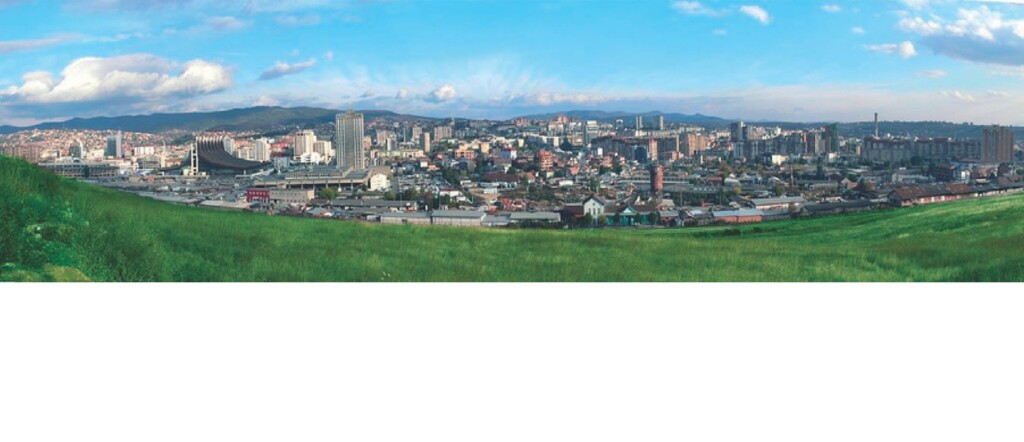Historiography of Pristina
It is unusual to think about how the mere passage of time can make ordinary, simple, and comprehensible facts seem distant and almost unbelievable. For instance, the fact that Pristina was once the residence of our kings, that it had a court where the 'exalted and pious King' Stefan Uroš III resided, and where 'mighty and autocratic of all Serbian and maritime lands' King Stefan, later the Emperor of the Serbs, Greeks, and Bulgarians, held council with John Kantakouzenos. In the 15th century, Pristina was a major trading center where silver from the Kopaonik and Novo Brdo mines arrived and was processed.
All that remains of this are memories and brief faded records in old manuscripts. Everything else has disappeared. Old buildings were demolished, and new ones were built from their materials for new times and new needs. Churches were converted into mosques and baths, palaces into residences and towers for new masters. Work in the surrounding mines was suspended, and trade declined. In the past century, however, Pristina became an administrative center.
Describing the location of Pristina, Nušić recorded: 'Pristina lies almost halfway along the length of Kosovo. It is a city with a rich historical past. During King Milutin's time, Pristina was the center of his kingdom, but other Nemanjić rulers also frequently stayed in Pristina.'
Being a priest in Pristina, as Father Miroslav Popadić says, is a great honor. In the former capital of King Milutin, in the city where Emperor Dušan often stayed, in the city where, during the Nemanjić period, there were 12 churches and monasteries, in the city where in one of the three churches, the Church of Christ the Savior, the body of Saint Prince Lazar rested for almost three years after the Battle of Kosovo. All these churches and monasteries were unfortunately destroyed or converted into mosques by the Turks.
But the Serbs of Pristina did not lose faith and hope in God; they did not leave Pristina. Together with their priests, as everywhere in Kosovo and Metohija, they gathered in homes where the holy liturgy was performed. In difficult conditions in 1830, they managed to obtain permission from the infamous Jashar Pasha to build a church on the foundations of the Monastery of Saint Nicholas.
To decorate their church as best as they could, despite poverty, the Serbs allocated funds from their modest incomes for the order of a 10.50 x 6 m carved iconostasis in Debar. Similar iconostases exist only in the Church of Saint Saviour in Skopje, the Monastery of Saint John Bigorski in Ohrid, and one church in Bulgaria, made by the three Filipović brothers. They put their whole innocent and beautiful soul into it, giving themselves with enthusiasm and flight.
Branislav Nušić wrote beautiful words about the iconostasis in his book about Kosovo, describing how its work looks embroidered, not carved. The iconostasis had many motifs from the Bible.

Each pillar was different from the other; one had various animals carved, another flowers, grapes, trees, and even the figures of the three brothers - the authors. The iconostasis consisted of 14 large and 53 small icons. The royal doors and the cross with the crucifix above the iconostasis were made with gold leaf.
The church itself was painted, and this was not known until 1992 when a layer of plaster covering it was removed.
Until 1999, about 40,000 Serbs lived in Pristina. In the 1990s, church and spiritual life in Pristina was highly developed. The Church of Saint Nicholas became too small to meet the needs of all believers. There were up to seven hundred baptisms a year, a hundred weddings, and significant attendance of faithful people at Sunday and holiday services.
With this in mind, the church community submitted a request to the competent state authorities for a location to build a new church. The request mentioned the wealth that had been previously taken from the church, including a parcel where material had been prepared for church construction just before World War II. After the war, the communist government changed the purpose of that parcel and built a theater on it, now called 'Ademi Jashari.'
The request to build a church was granted, and under the leadership of Bishop Artemije, a new church was built. A cross was placed on its dome, and further construction was halted by the bombing of our country and our people during the NATO intervention. At that time, the Serbian cemetery in Pristina also suffered greatly.
After signing the Kumanovo Agreement, when we all hoped that the peace forces would restore order, troubles and difficulties arose for our people and our sanctuaries in Kosovo and Metohija. Bad news followed one after another: about acquaintances who were killed or kidnapped, about burned houses and mined churches.
In Pristina, in the five years from 1999 to 2004, according to Father Miroslav Popadić, only two Serbian children and two American police officers were baptized, one of whom took the name Alexander and the other Lazar.
"I had one wedding, and that was of Živojin Rakčević, the editor of KiM radio. The last funeral I conducted was on June 28, 1999. After that, anyone who died was taken to Gračanica to be buried."
From 2005 to 2008, the church and parish house were completely reconstructed. However, the iconostasis was not made. Believers did not abandon their church, gathering on the feast day of the Church, and in 2014, the KUD "Kopaonik" Leposavić was the host of the feast, which was a particular honor.
According to folk tradition, Pristina got its name from the river Prist, as it 'sprung up' in the middle of the plain. However, the truth is that Pristina is not in the middle of the plain but nestled among the branches of the surrounding hills. Nušić also recorded another story: "In Pristina itself, they say that it used to be called Zbirština, which would mean a place of gathering, and from that, it later became Pristina."